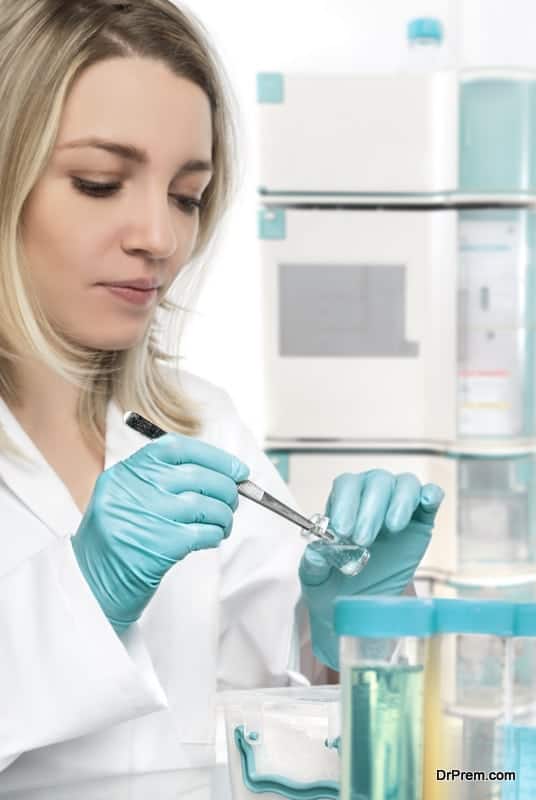Research is advancing with each passing day, and new and better methods of diagnosis of diseases are coming into being. One of the latest and most advanced cancer detection methods of diagnosis is through the butterfly effect.
New researches are coming up with respect to AI to detect cancer, but the butterfly method is even more advanced. The Morpho butterfly, MorphoMenelaus, which has an incredible and extraordinary set of eyes, inspired this method. Unlike any animal’s, the eyes of the Morpho butterfly consist of nanostructures, imparting to it it’s amazing brilliant blue color.
These nanostructures are capable of recognizing and obtaining the near infrared and the color information of the object it is viewing. Because of this property, this butterfly can see a large number of colors, more than most living organisms can see.
How does finding cancer through the butterfly effect work?
This method is one of the latest cancer diagnosis techniques which works just like the eyes of the Morpho butterfly. A camera is designed keeping in mind the eyes of this butterfly. The camera can detect and capture visible and well as infrared light. Unlike the fluorescence method, this camera can efficiently function in bright light too.
Optical imaging for cancer detection is quite sensitive and can be easily influenced by minor changes in temperature. But the butterfly camera is not so sensitive. It can carry on with its task even when the temperature rises or drops. It is more accurate than the previous methods of diagnosis and weighs less than an AA battery.
What are its advantages?
Finding cancer through the butterfly effect is nothing but a boon to science. Given its advantages, it is soon expected to become one of the leading methods of cancer detection.
Cost-effective:

This method is expected to cost around $200 whereas current devices charge as much as upto $20,000. Finding cancer through the butterfly effect in humans will be inexpensive in the future.
No sensitivity to petty factors:
This means that surgeons can work under bright lights with this camera without any hassle. Minor changes in temperature and pressure won’t affect the proper functioning of this device, as it does with optical lenses. The butterfly camera is also 1000 times more sensitive and more accurate than other forms ofcancer detection.
Extraordinary light detection properties:
Since this camera is able to detect infrared and visible light too, there is little to no possibility of the surgeon missing out on cancerous cells.
Also, there is no limitation whatsoever to work only under bright or dim light with the butterfly camera. This aspect played a major role in making the process of finding cancer through the butterfly effect quite promising.
Better accuracy:

The possibility of obtaining a distorted image or a wrong detection is almost completely negated with this camera. The possibility of missing out on remaining cancerous cells after surgery will be considerably eliminated with the butterfly method.
How is it better than other forms of cancer detection?
Finding cancer through the butterfly effect is better than current methods of detection in many ways. The existing methods of diagnosis have their own limitations and disadvantages. The fluorescent dye technique does work fine; but surgeons need to dim the lights when performing the surgery. This is because fluorescence is quite visible in brightly colored rooms, and tends to get in the way of work.
Another one of latest cancer diagnosis techniques by imaging cameras used currently is pretty sensitive. They function on multiple optical elements for different intensities and wavelengths of light. Any slight change in even something as insignificant as room temperature is enough to hamper the diagnosis results.
But finding cancer through the butterfly effect is a smooth process and, as per current research, poses no issues whatsoever. The butterfly method uses a single system which combines both visual and infrared properties for excellent imaging. With proper development, this method is bound to take over the field of cancer detection in the next few years.
What is the future of this method of cancer detection?

The butterfly camera can be used to detect various types of cancers in human. Head and neck cancers, prostate cancers, and melanomas can all be diagnosed with this method. If that wasn’t enough, it can even be used in endoscopy to detect cancers in colonoscopy.
There are multiple uses and benefits for the butterfly method in cancer detection now and in the future. It can totally replace breast cancer pills to fight off remaining cancer cells after surgery. This is because the butterfly camera can spot them easily and accurately.
CONCLUSION:
Finding cancer through the butterfly effect may not be the best or the last way to detect cancer. However, it is surely the most convenient and the most effective of all methods. The butterfly method, as mentioned before, does not pose any side effects or health risks to the patient. Which is why the future of this aspect of science looks quite promising.
It is cost-effective, more accurate, and better able to carry out diagnosis than all other forms of cancer detection available. It has already been proven to be of value with respect to breast cancer detection in mice. In the near future, it will prove its worth for human cancer detection as well. It may even take over the place of AI to detect cancer in humans.





